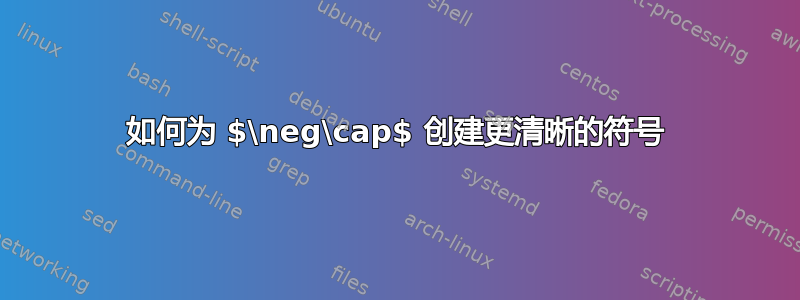
在纸上或白板上书写时,我经常使用带有一条线的交叉符号来表示不相交的集合。但是,我还没有找到在 LaTex 中执行此操作的方法(只是$\neg\cap$在错位的线条中书写结果)。有人知道我该如何解决这个问题吗?我对 Latex 很陌生,所以不熟悉如何做任何事情
答案1
我猜你的意思是\not\cap,我也同意这看起来很糟糕。相反,你可以使用符号\diagup,这需要amssymb包。有多种通过将一个字符叠加在另一个字符上来创建新字符的技术。例如,参见这个问题及其答案。
\documentclass{article}
\usepackage{amssymb}
\makeatletter
\newcommand{\disjoint}{\mathrel{\mathpalette\disj@int\relax}}
\newcommand{\disj@int}[2]{%
\ooalign{%
\hfil$\m@th#1\cap$\hfil\cr
\hfil$\m@th#1\diagup$\hfil\cr
}%
}
\makeatother
\begin{document}
$A\disjoint B$
\end{document}
答案2
\mathpalette和的简单组合\ooalign。
\documentclass{article}
\usepackage{amsmath}
\makeatletter
\newcommand{\disj}{\mathrel{\vphantom{\cap}\mathpalette\disj@\relax}}
\newcommand{\disj@}[2]{%
\ooalign{$\m@th#1\cap$\cr$\m@th#1\neg$\cr}%
}
\makeatother
\begin{document}
\begin{gather*}
A\disj B
\\
\bigcup_{A\disj B}C_A
\end{gather*}
\end{document}
“幸运”的情况是,在 Computer Modern 数学字体中\neg和\cap具有完全相同的宽度(其他字体可能没那么幸运)。




